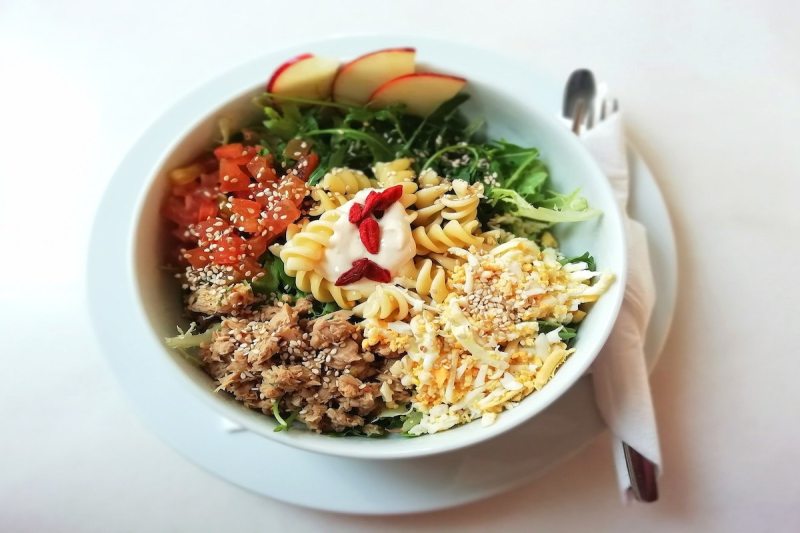Fasting is becoming increasingly popular, as many people want to explore the possible benefits of abstaining from calories for periods of time. As a nutritionist, I have had many clients who found fasting methods like intermittent fasting helped them control their eating and lose weight.
With intermittent fasting taking off, you may want to consider trying it for yourself. Before giving it a go, keep reading to learn more about how to intermittent fast, the potential benefits, and different methods.
What is intermittent fasting?

Intermittent fasting is an eating pattern that alternates between periods of eating and fasting. It focuses on when you eat rather than what you eat, making it a flexible approach to managing your food intake. There are many different methods of intermittent fasting, with one of the most popular being the 16/8 method.
During fasting periods, the body uses stored fat for energy, promoting fat-burning and potential metabolic benefits. Intermittent fasting may aid in weight loss, improve insulin sensitivity, and support overall health for many people. For optimal results, you’ll want to pair it with a balanced diet.
What are the benefits of intermittent fasting?

Supports weight loss
Intermittent fasting helps reduce calorie intake by limiting eating to specific timeframes, which can lead to a calorie deficit and weight loss. During fasting periods, the body has to burn stored fat for energy rather than calories, assisting this process.
Additionally, fasting can reduce insulin levels. Dr. Janine Kyrillos says, “Insulin is the main driver of fat storage. If you are constantly eating, you are triggering insulin production all day long. When people have too much insulin, their cells start to resist the insulin, and, in response, the body has to make more.”
Simplifies eating habits
By designating specific eating windows, intermittent fasting eliminates the need to plan and prepare multiple meals throughout the day. This simplicity makes it easier to stick to a routine, helping you be consistent. Many find that fasting improves appetite control, reduces unnecessary snacking, and promotes mindfulness regarding food choices.
Boosts metabolic health
For many individuals, fasting improves insulin sensitivity, lowering blood sugar levels and reducing the risk of type 2 diabetes. It may also enhance brain health by increasing the production of brain-derived neurotrophic factor (BDNF), which supports cognitive function. Fasting can reduce inflammation, which benefits the body in numerous ways.
What can you eat while intermittent fasting?

During fasting periods, you should avoid consuming any calories. However, you can still have water, black coffee, herbal tea, or other non-caloric beverages to stay hydrated and suppress hunger.
When in your eating window, no food is off limits. Still, you want to focus on nutrient-dense, whole foods that will support your body. Include lean proteins like chicken, fish, eggs, or tofu to promote satiety and muscle health. Healthy fats such as avocados, nuts, seeds, and olive oil are great for sustained energy. You also want to incorporate complex carbohydrates like whole grains, fruits, and vegetables for fiber and essential nutrients.
Try to avoid processed, high-sugar, or calorie-dense foods, as they can negate the benefits of fasting. If needed, consider small snacks like nuts, yogurt, or fruit within your eating window.
5 intermittent fasting methods to try

- 16/8 method: This popular method involves fasting for 16 hours and eating during an 8-hour window. Many people skip breakfast and eat between 12 p.m. and 8 p.m., making it simple to incorporate into daily routines.
- 5:2 diet: With the 5:2 method, you eat normally for five days a week and significantly reduce calorie intake to about 500 to 600 calories on the remaining two days. You can be strategic, as the fasting days don’t have to be consecutive, offering flexibility.
- Alternate-day fasting: With alternate-day fasting, you alternate between fasting days and regular eating days. On fasting days, some people consume only 500 calories, while others avoid eating altogether.
- Spontaneous meal skipping: This informal method lets you skip meals occasionally when you’re not hungry or too busy to eat. It’s flexible and beginner-friendly without rigid schedules.
- OMAD: OMAD (one meal a day) is an extreme version of intermittent fasting where you eat all your daily calories in one meal, fasting for the remaining 23 hours. It requires discipline but simplifies meal planning.
Is intermittent fasting considered dangerous?

Intermittent fasting is generally safe for healthy individuals, but it may not be the best idea for everyone. It can be dangerous for those with medical conditions like diabetes, eating disorders, or low blood sugar, as it may cause imbalances or excessive calorie restriction. Pregnant or breastfeeding women, children, and people with nutrient deficiencies should avoid fasting without medical supervision.
Common side effects include fatigue, irritability, and dizziness, especially when starting. To minimize risks, choose a method that fits your lifestyle, prioritize nutrient-dense foods, and consult a healthcare professional if you have any questions or concerns. When done correctly, intermittent fasting can be a safe and effective way to support your health goals.
Frequently asked questions

Is it better to fast for 12 or 16 hours?
Both 12-hour and 16-hour fasts can be effective, depending on your goals. A 12-hour fast is good for beginners and those generally looking to improve their health. A 16-hour fast (part of intermittent fasting) may enhance fat loss and metabolic health. Choose based on your lifestyle, hunger tolerance, and ability to maintain consistency.
What are the five steps of intermittent fasting?
The five steps of intermittent fasting include choosing a method, such as the 16/8 or 5:2 schedule, and setting specific fasting and eating windows to fit your routine. Start gradually by easing into longer fasting periods to allow your body to adjust. Prioritize nutrient-rich, whole foods during eating windows to support health and energy. Lastly, stay consistent with your chosen plan to achieve sustainable results.
Why am I not losing weight on 16:8 fasting?
You might not be losing weight on 16:8 fasting due to factors like consuming too many calories during eating windows, eating calorie-dense or processed foods, a lack of physical activity, high stress, or poor sleep. Tracking calories, improving food choices, and exercising can help optimize your results.




